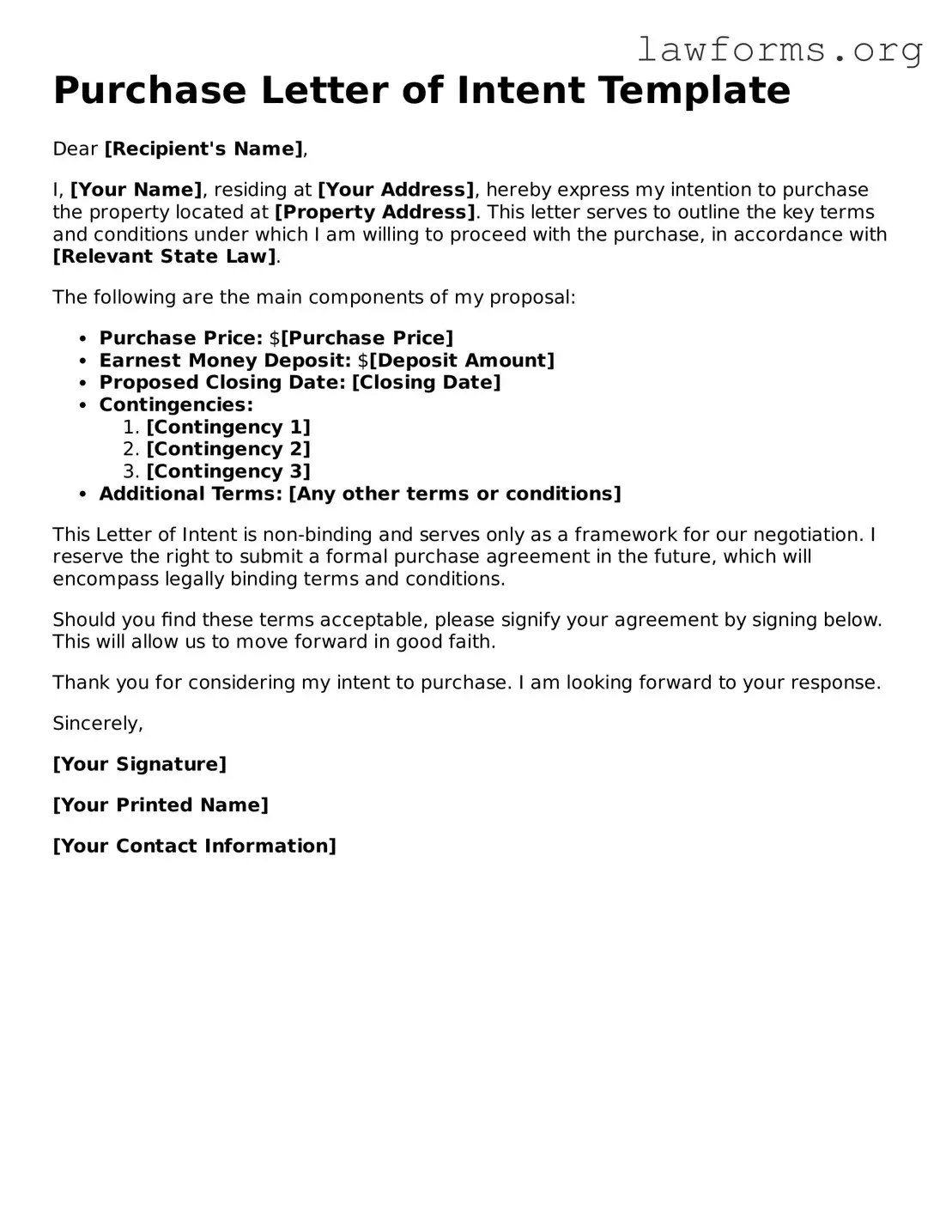Purchase Letter of Intent Template
Dear [Recipient's Name],
I, [Your Name], residing at [Your Address], hereby express my intention to purchase the property located at [Property Address]. This letter serves to outline the key terms and conditions under which I am willing to proceed with the purchase, in accordance with [Relevant State Law].
The following are the main components of my proposal:
- Purchase Price: $[Purchase Price]
- Earnest Money Deposit: $[Deposit Amount]
- Proposed Closing Date: [Closing Date]
- Contingencies:
- [Contingency 1]
- [Contingency 2]
- [Contingency 3]
- Additional Terms: [Any other terms or conditions]
This Letter of Intent is non-binding and serves only as a framework for our negotiation. I reserve the right to submit a formal purchase agreement in the future, which will encompass legally binding terms and conditions.
Should you find these terms acceptable, please signify your agreement by signing below. This will allow us to move forward in good faith.
Thank you for considering my intent to purchase. I am looking forward to your response.
Sincerely,
[Your Signature]
[Your Printed Name]
[Your Contact Information]
